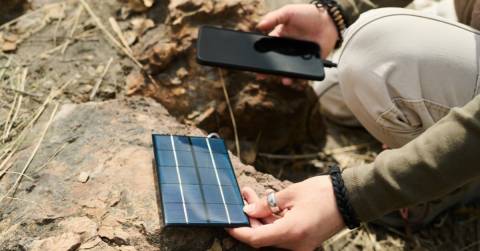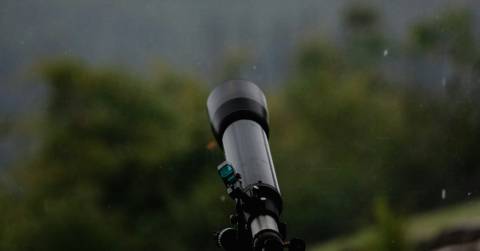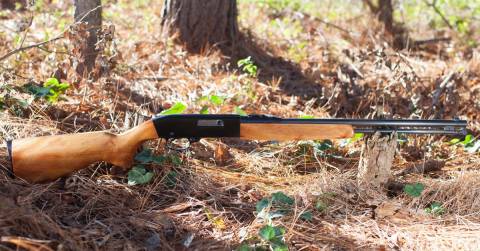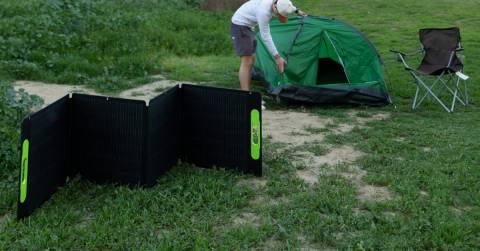The Best Midrange Digital Camera For 2025
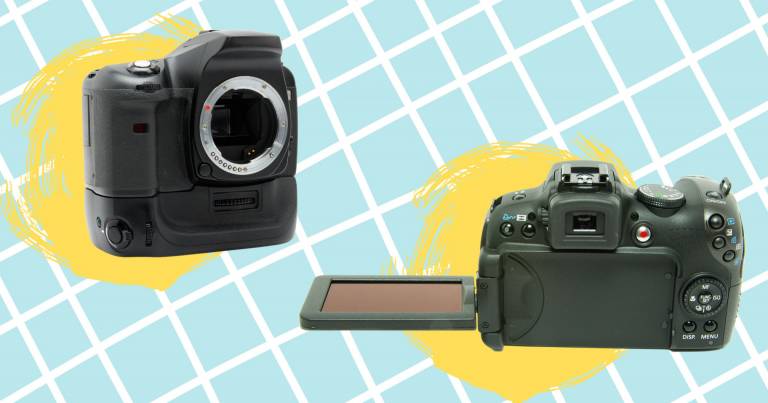
The Quick List
Panasonic LUMIX FZ300 Digital Camera
Sony ZV-1 Digital Camera
Panasonic LUMIX G7 Digital Camera
Finding the right digital camera can be a challenge when it comes to taking beautiful photos and videos. With so many different models, narrowing your choices down to the perfect one cannot be easy. If you're looking for a digital camera that offers excellent quality without breaking the bank, you should look into the best midrange digital cameras on the market.
These cameras offer the perfect combination of features, quality, and price, making them an excellent choice for any photographer. From DSLRs to mirrorless cameras to point-and-shoot models, there are various midrange digital cameras to choose from. In this guide, we'll take a closer look at some of the best midrange digital cameras on the market and explain what each has to offer.
We think the best midrange digital camera is Panasonic LUMIX FZ300 Digital Camera, so you will have no difficulty finding anything to meet your needs! This camera has exclusive 4K photo technology that uses 30 frames per second to extract photos from high-resolution 4K ultra HD videos. To help you find the best fit for your needs, we've put up a purchasing guide and shown other great options for you to consider.
Our Top Picks
4K photo technology Rugged camera design High image quality 5-axis hybrid optical image stabilizer plus
A bit hard to use the first time
The Panasonic LUMIX FZ300 Digital Camera is a versatile camera that perfectly balances features for beginners and professionals. This camera has exclusive 4K photo technology that uses 30 frames per second to extract photos from high-resolution 4K ultra HD videos. The Leica DC Vario Elmarit lens with a 24x zoom range and F2.8 aperture allow you to capture images even in low light conditions. Its 12.1-megapixel high-sensitivity MOS sensor with the venus engine excels in diffraction compensation, yielding images that are crisp and free from artifacts associated with small aperture settings.
The rugged camera design of the LUMIX FZ300 is splashproof and dustproof, making it an excellent option for outdoor photography. It also comes with a 5-axis hybrid optical image stabilizer that reduces blur from one-handed video shooting by compensating for five types of movement. The level shot function detects and maintains the horizon line, even if the camera is tilted.
Nevertheless, it may be a bit hard to use the first time, but you can get used to it after some use, so you don't have to worry much about that. Overall, the Panasonic LUMIX FZ300 is a tremendous all-weather camera with advanced features, making it an ideal option for beginners and professionals.
Large aperture lens Real-time eye autofocus tracking Side flip-out LCD screen Automatic exposure
Doesn't do 4K at 60 fps
The Sony ZV-1 Digital Camera is an excellent camera for vloggers and content creators looking for a compact and lightweight camera that is easy to use. This camera comes with a 20.1-megapixel stacked back-illuminated 1" Exmor RS CMOS sensor with DRAM that allows you to capture high-quality images and videos even in low-light conditions.
The camera's large aperture 24-70mm1 F1.8-2.8 ZEISS Vario-Sonnar T lens with fast hybrid autofocus and real-time eye autofocus tracking allows you to capture images with great detail and clarity. It has a side flip-out 3.0" LCD screen tilts up and down for easier-to-compose selfie shots. Additionally, the Sony ZV-1 has an automatic exposure (AE) that tracks faces and ensures they always appear well-lit.
This camera also comes with a forward-directional onboard mic and detachable windscreen, allowing you to capture great sound in one take. The minor downside is that it doesn't do 4K at 60 fps, but it is not a big deal. Overall, the Sony ZV-1 is an excellent option for vloggers and content creators looking for a compact, lightweight camera with advanced features.
4K video capabilities Intuitive controls with assignable function buttons High-resolution viewfinder and LCD Multiple connectivity options
Low-light performance could be better
The Panasonic LUMIX G7 Digital Camera is a powerful, versatile camera perfect for professional and amateur photographers. With its 16-megapixel four-thirds sensor and no low pass filter, this camera delivers sharp images with high dynamic range and artifact-free performance. It also has 4K video capabilities, which allow you to capture stunningly detailed and crisp video footage.
This product offers intuitive controls that make adjusting aperture and shutter settings with the front and rear dials easy while making white balance and ISO adjustments on the fly. You can assign your favorite locations to any of the six function buttons on the camera's body or menu. This camera also features a high-resolution (2,360K dot) OLED live viewfinder and a rear touch-enabled 3-inch tilt/swivel LCD (1,040 dots) that is clear even in bright sunlight.
While the Panasonic LUMIX G7 Digital Camera has many impressive features, it's worth noting that its low-light performance may not be as good as some other models. However, this camera is a solid choice for those prioritizing video quality and sharp images.
Lightweight and small Dual Pixel CMOS AF for fast and accurate autofocus Capabilities for 4K resolution recording A variable-angle LCD for selfies and fun angles
Battery life could be extended
The Canon EOS Rebel SL3 is a fantastic entry-level DSLR camera with many features and capabilities that will not disappoint you. Its lightweight and compact design suits those new to SLR photography who want a simple camera to use and handle. This camera has a 24.1 Megapixel CMOS sensor and a DIGIC 8 Processor, which results in stunning images with vibrant colors and fine details. Unfortunately, the camera's battery life is less than other DSLR cameras, but this isn't a deal breaker.
Dual Pixel CMOS AF provides quick and accurate autofocus, so you never miss a shot. Furthermore, the camera has a large focus area, making it simple to capture the image you want, whether it's a landscape or a once-in-a-lifetime moment with a loved one. The EOS Rebel SL3 also has 4K recording capabilities, allowing you to capture stunning videos with fine details and vibrant colors. Its vari-angle LCD makes it simple to take selfies and shoot from awkward angles. At the same time, its Creative Assist feature allows you to channel your creativity and create one-of-a-kind photos and videos.
The image quality is superb Video in 4K Ultra HD A quick autofocus system Excellent performance-enhancing features
The lens could be dirty
The Nikon D7500 DX-Format Digital SLR camera is an excellent choice for photographers looking to advance their photography careers. It employs the same 20.9 MP DX-format image sensor and EXPEED 5 image processing engine as the D500, resulting in exceptional sharpness and tonality, particularly in low-light situations such as concerts and sporting parties, and events. With the improved RAW buffer, you can capture up to eight frames per second, 100 JPEG Fine frames, or 50 14-bit lossless compressed RAW edges.
You can continue taking photos while the previous RAW images are written to the memory card if you capture up to 50 RAW images. It employs the same 180,000-pixel RGB sensor as the D500 to detect human faces and improve AF performance when shooting at high speeds. This is particularly useful for event photographers who must capture fast-moving subjects in low-light situations.
Using industry-leading NIKKOR lenses and pro-level video features like power aperture control to adjust the aperture while recording and touch focus control, you can record rich and detailed 4K Ultra HD or Full HD videos for up to 29 minutes and 59 seconds. This device can also capture stunning 4K Ultra HD time-lapse videos and movies in MP4 or MOV format for easy playback on smart devices. The only issue is that the lens can become dirty, requiring careful storage.
The body is small and light Has a versatile zoom range with exceptional macro capabilities Autofocus and image stabilization are both reliable High-resolution imaging with excellent color reproduction and detail
There is no support for high frame-rate recording
The Canon EOS RP is a compact, lightweight, full-frame mirrorless camera with advanced features and high-quality imaging capabilities. This camera is intended to be simple, with an intuitive interface and a control ring that allows quick settings changes such as shutter speed and aperture. It also has reliable autofocus and image stabilization, making it an excellent choice for various shooting situations.
This lens's zoom range allows you to capture various subjects, from wide-angle landscapes to close-up portraits. The EOS RP and RF24-105mm F4-7.1 STM lens kit are beneficial for macro enthusiasts, with a maximum magnification of 0.5x using Center Macro Focus, allowing you to capture detailed images from as close as one inch away. The minor disadvantage is that it does not support recording at high frame rates.
The Canon EOS RP also has reliable autofocus and image stabilization thanks to its Dual Pixel CMOS AF and optical image stabilization with up to 5 stops of shake correction. This makes it ideal for shooting fast-moving subjects and in low-light situations. The camera also has a 26.2-megapixel full-frame CMOS sensor and a DIGIC 8 image processor, which produce high-quality images with excellent color reproduction and detail.
Fast Hybrid AF Real-time Eye AF External microphone jack Advanced AI-based subject recognition technology
No in-body stabilization
This product's Fast Hybrid AF system lets you capture sharp, clear images with fast and accurate autofocus, making it ideal for 4K movies and stills. The skin tone feature inherited from Sony's latest full-frame cameras is another standout feature that captures natural-looking human skin tones with stunning detail and clarity. Moreover, Real-time Eye AF provides continuous eye tracking for portraits, even when the face is partially hidden, backlit, or down.
Another great feature of this camera is the external microphone jack, which lets you record high-quality audio for serious movie shooting and vlogging. The α6100 also delivers natural-looking images with improved color reproduction, making your photos and videos more vibrant and true to life. Sony's sophisticated AI-based process also allows you to keep active subjects in constant focus, ensuring that you never miss a moment.
One drawback to this camera is its lack of in-body stabilization, which means you might struggle to capture sharp images in low light or handheld situations. Overall, the Sony Alpha A6100 Mirrorless Camera is a high-performing camera with exceptional image quality and features, making it an excellent option for vloggers, portrait photographers, and wildlife enthusiasts.
More To Consider
What to Look For in a best midrange digital camera?
Sensor Type And Size
Shutter Speed
Megapixels/Resolution
Image Stabilization
Size And Ergonomics
Aperture
FAQs
What is a midrange digital camera?
A midrange digital camera is a digital camera that sits between the low-end and high-end cameras in terms of features and price. Midrange cameras typically offer more features than the low-end models, such as higher resolution, better image quality, and more manual controls. They also tend to be more expensive than the low-end models but still cheaper than the high-end models.
What are the benefits of a midrange digital camera?
The benefits of a midrange digital camera include better image quality, more manual controls, and a longer battery life than low-end models. They also tend to have more features than the low-end models, such as faster shutter speeds, better autofocus, and more creative shooting modes. Additionally, they usually offer a good balance between price and features, making them a great option for those who are looking to get the most bang for their buck.
What should I consider when buying a midrange digital camera?
When buying a midrange digital camera, you should consider the features that you need and how you plan to use the camera. Look for features such as image stabilization, manual controls, and a longer battery life. Additionally, consider the size and weight of the camera and make sure that it is comfortable for you to use. Finally, look for a camera that is within your budget and that offers the features that you need.
Conclusion
It's challenging to determine the greatest product while deciding what to buy. We wanted to help you narrow things down by offering a list of best midrange digital camera above so you can make a better-educated decision before purchasing anything that might never work for you.
Would any of these ideas strike a chord with you? If that's the case, keep these in mind before making any purchases! You may also look into Fujifilm X100V Digital Camera to find another option that is a good fit for you.
READ NEXT: The Best Portable Solar Charger For Camping In 2025
 By, Katie Finn
By, Katie Finn










